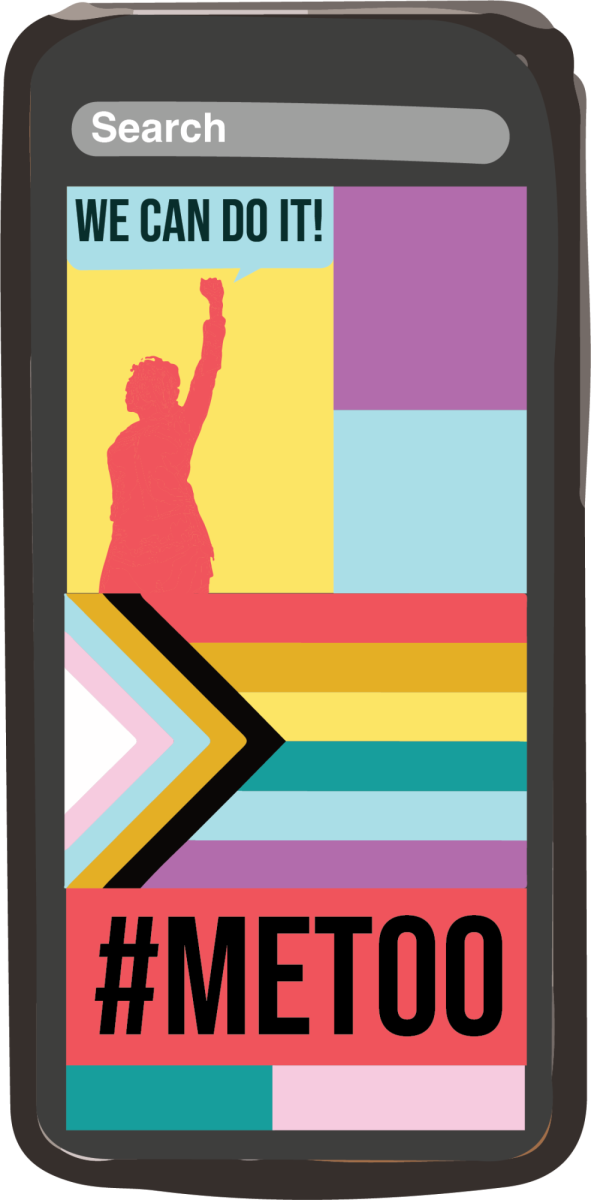In October of 2017, social media encouraged one of the biggest social movements to this date. #MeToo prompted individuals to gather together to share their sexual assault stories and gain community by using the hashtag. The movement was one of the many waves of feminism, but this time, it was prompted by social media.
Social media has played a huge role in shaping modern feminism, from the powerful #MeToo movement to the “I’m just a girl” trend. Apps like TikTok and Instagram create platforms for modern feminism to educate, spread and thrive. This advocacy has mainly been executed thanks to the large Gen Z presence on social media platforms. Senior Antoni Hawk explains how social media is used for the most part, as a tool that is utilized to educate audiences. She says that by using platforms like Instagram and Tiktok, she has gained more knowledge and shaped her views on feminism.
“I didn’t think that there were specific types [of feminism],” Hawk said. “More people are included in the feminist movement than I originally thought, and it expands to include everybody, and not just a specific set of people.”
Popular TikTokers like Dylan Mulvaney, who advocates for transgender women’s rights, and Blair Imani who spreads awareness about Black, Muslim, and LGBTQ women, use their platforms to inform audiences about the feminist movement, and the importance of intersectionality. These communities are shared through social media platforms including Instagram and Youtube, and are an important break from common social media misinformation. Studies show that women are highly underrepresented in media, but social media platforms have become vital in giving women a platform to share their voices.
“In a study at the Qatar Computing Research Institute, researchers found that in countries with large gender inequities in offline life, women were more likely to have significant online presences,” Council on Foreign Relation said. “In Pakistan, for example, women on average had more followers on Google+ (twenty-five versus sixteen) and Twitter (600 versus 222) than their male counterparts.”
The language used in feminist movements has changed drastically since early women’s suffrage movements, nowadays, Generation Z uses the term intersectionality to describe their feminist views. According to the UN Women’s Organization, the term “intersectional feminism” was coined in 1989 by Kimberlé Crenshaw. Social media prompted a spread in education of intersectional feminism, allowing women of all types and backgrounds to have power in sharing their experiences and stories.
“Intersectional feminism centers the voices of those experiencing overlapping, concurrent forms of oppression in order to understand the depths of the inequalities and the relationships among them in any given context,” Website UN Women.org states.
Other terminology shared by Gen Z like being a “Girls’ Girl” has also been used by education platforms. Being a “Girls’ Girl” is a woman who is always looking out for other women, as defined by many TikTok influencers. Sophomore Elizabeth Carlin describes the community that platforms like TikTok provide for women to give out advice, educate, and defend other women when needed.
“As a society, people are always trying to shine women in a negative light,” Carlin said. “I think that women actually do a good job of empowering other women, but it’s always a double edged sword.”
Female empowerment on social media have created a large sense of community, with recent viral videos stemming from awards shows like the Golden Globes, where comedian Jo Koy made sexist jokes about Taylor Swift, and award winning feminist movie, “Barbie”.Tiktoks emerged after the show aired, criticizing the comedian for insulting many of the most successful women in the room, Taylor Swift, Greta Gerwig and Margot Robbie.
Similarly to the sense of community created by educational videos on Tiktok, emerging trends like “girl dinner,” “girl math,” and even the sound that sings “I’m just a girl” have created large circles of women who can relate to the same things. Feminism has interestingly gone from women fighting to be included in the workforce and to vote, to now women on tiktok embracing femininity and trends that ironically highlight women’s helplessness. Carlin explained how sometimes these trends could be harmful to the feminist movement.
“The ‘I’m just a girl’ trend is sometimes very harmful,” Carlin said. “It boils down women to just being silly little creatures. Those trends, yes, they’re fun, but they’re also harmful for the image of women.”
Although trends like these remain somewhat harmful to the perception of women, it is important to note that they are participated in ironically. Along with these popular sounds, women on social media have embraced a more feminine look, known as coquette, where bows, light pink colors and soft makeup are embraced. Carlin expressed the importance of not stereotyping feminists, and that feminism includes all women no matter how they express themselves.
“Feminism used to be the suffrage movement, it used to be you have to wear pants if you want any sort of control, and I feel like it’s taking it back and making it how we want feminism,” Carlin said, “It’s showing that there’s no real image or what you have to look like to be a feminist and making it more for everyone.”





